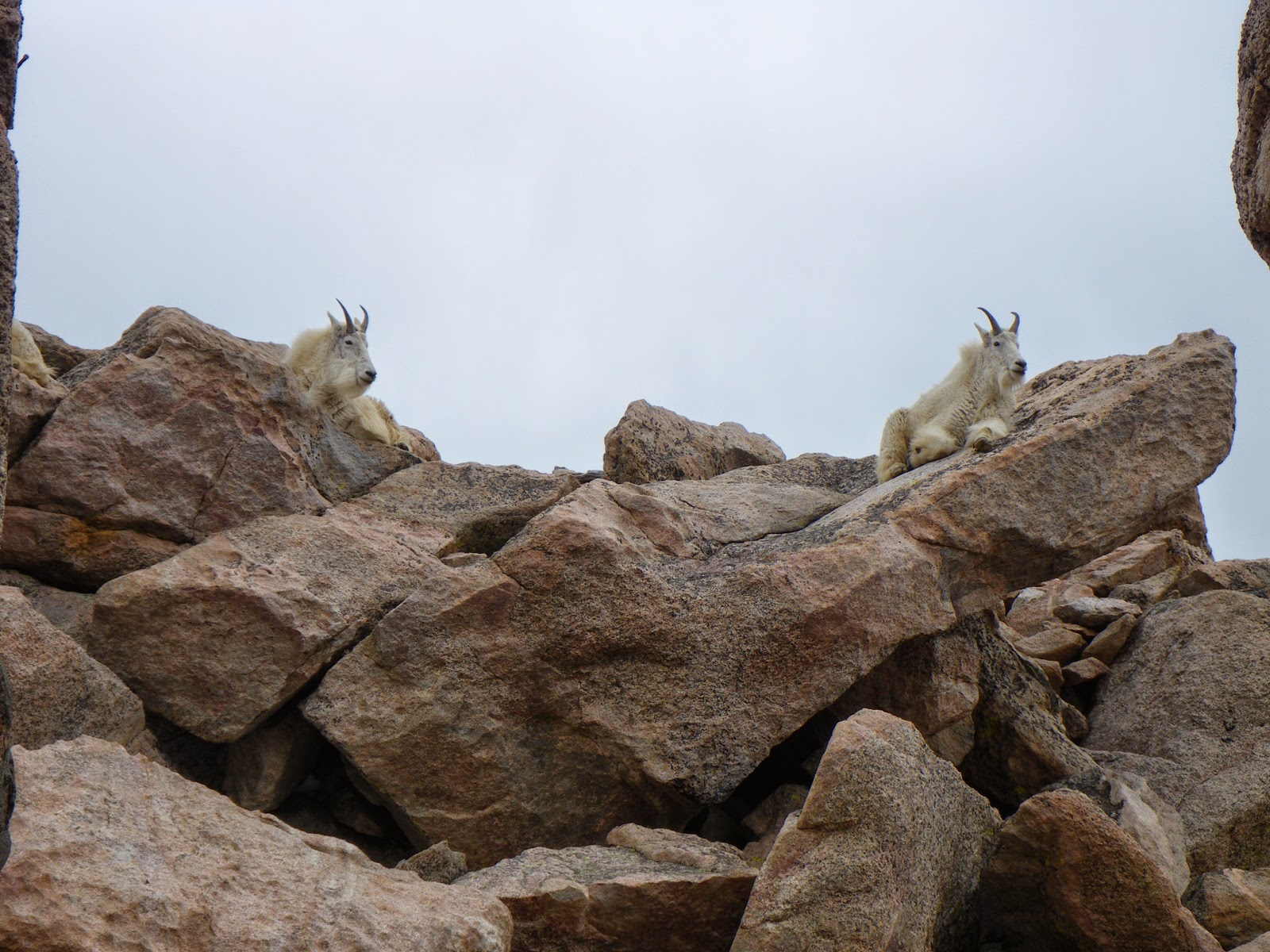I got up at five on Sunday morning and wore hiking boots and long Johns to join Glenn on a snow climb and a hike. Snow climbing, for people who, like me until recently, do not know, entailed stabbing an ice axe into the ground to secure myself while I kicked “stairs” into the snow so I could step up. The axe, when used properly (emphasis on “when used properly”) also stops you from sliding helplessly down the slope of the mountain until large piles of huge pointy rocks break your fall. I tripped/stumbled/faceplanted too many times to count, and I fell into a real slide (“unintentional glissade,” said Glenn) three times; the first time was heartbreakingly spectacular - fifty feet of progress gone in seconds! - but I'd gotten the hang of stopping myself using the axe before I fell too far after that.
My scariest moment was when I slipped my right foot into what Glenn called a “moat,” the soft snow that occurs around rocks after they heat up in the sun, and I ended up sitting in the snow with one leg dangling over the abyss and the other still digging into my last step. I don’t know how the science works, that I couldn’t fit my foot back through the hole that I had just plunged it into, but I knew my number was up. I’d just have to make a home there until the snow I was sitting on broke too, and then the fall would put me out of my misery. BUT SOMEHOW I SQUIRMED OUT! The human body is capable of truly incredible things when it thinks it’s going to die.
 |
| Me and my climb, the strip of snow to the left of the picture. |
We began from Summit Lake at 12,000 feet. This terrain is tundra, so now I know what my teacher was going on about when we were learning biomes in bio. There are lots of tiny ponds there separated by these clumps of dry grasses.
 |
| In the thick of it. |
It was kinda steep! The strip is called Sunrise Couloir (the French word for “corridor”), and it is a Class 3 route, which means that it involves “scrambling or un-roped climbing. You must use your hands most of the time to hold the terrain or find your route. This may be caused by a combination of steepness and extreme terrain (large rocks or steep snow).”
After a hard trip up, we had a choice to make: go left and hike up Mt. Evans, or go right and do the lesser Mount Spalding. Glenn advised the latter, which was good because after we’d been hiking for a while, I started feeling pretty badly. But I still made it to the summit (13,842 feet).
 |
| I'm not the kind of person that usually appreciates the cheap showiness of nature, but this view of the Chicago Lakes from the Spalding summit was exquisite. |
Then we made the drive up to Mt. Evans, because I haven’t been since OEL ten years ago. We saw some mountain goats and a pika, which is like a chirping hamster-squirrel. I also saw marmots, which are super-fat gophers with twirly tails.
The goats started looking awful good, so on the way home, we stopped by Idaho Springs for a burger and duck drumsticks, and we walked over to the Charlie Tayler water wheel. According to the little historical plaque by the wheel, Charlie Tayler, a miner, “attributed his good health to the fact that he never kissed women or took baths.”
Anyway, the climb was indescribably awesome. I don’t know how I’m going to go back to spending my weekends not sliding fifty feet down a mountain slope backwards.







No comments:
Post a Comment